Rotational Vs Linear Baseball, Softball, & Slow Pitch Types Of Swing Mechanics? | Hitting Drills & Trunk Strength Exercise Benefits
Learn if there are different types of rotational vs linear baseball, softball, and slow pitch swing mechanics. Discover hitting drills and trunk strength exercise benefits.
Rotational Linear Hitting Mechanics: Get Rid of Old Tired Hitting Dogmas Once and For All

Isn’t this diagram showing proper bat path? Both are linear!! This is part of the confusion that’s out there on the net. Diagram courtesy: BackBackBack.com
A rotational linear hitting mechanics reader question came in recently that relates well to both baseball and softball…
“What is the best to teach a rotational swing or a linear swing?”
Here’s what we’ll cover in this rotational linear hitting mechanics post:
- Swing is both…and then some,
- Conservation of Linear v. Angular Momentum,
- Planes of Motion, and
- Centripetal v. Centrifugal…
SCIENCE-BASED TRAINING:
Improve your hitting strategy dramatically by applying human movement principles.
Learn not only how and what to train but also the science behind the methods.
Swing is Both…and then Some
Even when I was wrongly teaching my hitters to ‘swing down on the ball’, I had a gut feeling rotational linear hitting mechanics were a little of both. It didn’t make sense to say it was one or the other. If you find yourself thinking this, then you have an incomplete understanding of dynamic human movement.
My advice? Get educated. Do your homework. Test. Re-test. With today’s access to quality information, experts, and sophisticated technology, there’s ZERO room for ‘willfully ignorant’ hitting theories. If you aren’t growing, you’re dying. Us coaches MUST hold ourselves to a better teaching standard. Standards that go beyond hitting absolutes, which aren’t wrong – but incomplete.
We MUST apply human movement principles, that are validated by science, to hitting a ball. Another word for ‘principles’ are “rules” or “guidelines”. Think of these principles as bumpers at a bowling alley keeping the ball from plopping into the gutter. What path the bowling ball takes between the bumpers doesn’t matter, just as long as it stays between them. Hitting absolutes are what goes on between the bumpers.
You following me? Human movement principles first. And how they’re applied (think video analysis) comes second. If it’s the other way around, then we’ll have hitters burying their chins into their chests like Andrew McCutchen (see image below)…
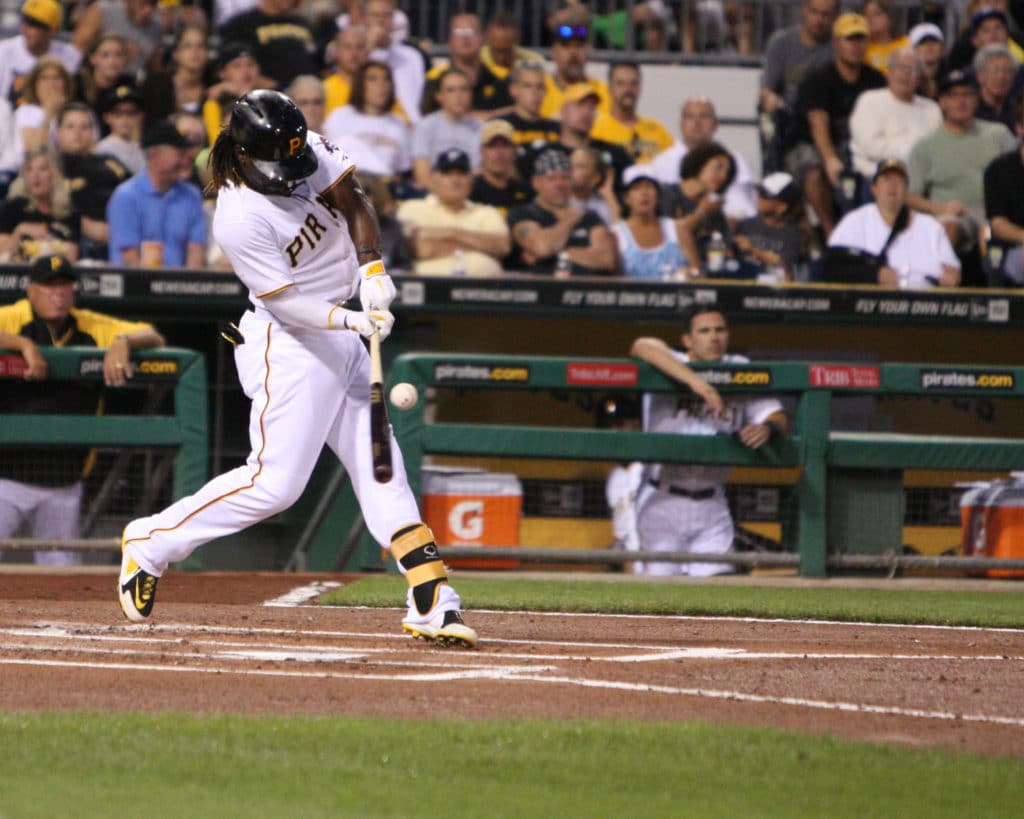
Image courtesy: http://12075-presscdn-0-91.pagely.netdna-cdn.com/
Many of you will see this ‘chin to chest’ image and won’t find anything wrong with it, “he’s keeping his head down at impact,” you’ll say. I’m afraid Cutch is succeeding despite this ineffective mechanic, NOT because of it.
See WHY breaking the ‘One-Joint Rule’ bleeds force at impact by CLICKING HERE.
…Or closing the gap between their rear ear and shoulder like Derek Jeter or Bryce Harper during the turn, which is a blatant breaking of the One-Joint Rule (see image below)…

Photo courtesy: http://districtondeck.com/
Again, Bryce Harper is succeeding despite this ineffective mechanic, NOT because of it. In the corrective fitness world, we say ‘shoulders are ear poison’ to maximizing force and reducing the probability of injury. So, what did I mean in the sub-title above “…and Then Some”?
That I’ll answer under the Centripetal v. Centrifugal Forces subtitle below. Let’s get started fleshing out rotational linear hitting mechanics…
Conservation of Linear v. Angular Momentum
There are a couple great Circus Physics resources from the Public Broadcasting System (PBS) website on these two concepts (each have 2-min videos):
- Conservation of Linear Momentum, and
- Conservation of Angular Momentum (turning).
To prove the swing is both of these, watch a clip of Albert Pujols a wide-no stride swing, when he was with the Cardinals, which most purely rotational people point to as a good example of their ‘hitting theory’:
Like golf, you see his pelvis slide forward before he starts turning. This is a linear move, and I call it shifting foot pressure.
His weight goes from the outside of his back foot, inside front foot…then as his pelvis shifts forward, you’ll see his weight go to the inside of his back foot, outside of front foot.
Shifting foot pressure is what I would teach my fastpitch hitters because of their compressed reaction time, similar to these Lauren Chamberlain swings:
Also note, Pujols and Chamberlain ARE NOT ‘squishing the bug’ with their back foot, another thing purely rotational ‘hitting theorists’ cling to.
Look at this more recent clip of Pujols with the Angels. Here he employs a traditional linear stride:
Now, Ichiro Suzuki is who the purely linear ‘hitting theorists’ point to as a great example of their system. Watch this video:
You’ll see a little more linear elements to Ichiro’s swing (forward momentum and hand path), but he still starts sideways, and rotates, or turns, the center of his chest to impact. Did you catch the keywords “rotates” or “turns”?!
Show me one hitter in the Big Leagues or Professional Fastpitch that ONLY have a linear swing…or ONLY have a rotational swing.
I guarantee you won’t find ONE.
At ANY level, I GUARANTEE you won’t find ONE baseball or softball hitter, PERIOD, that does either one or the other!!
Are you getting the rotational linear hitting mechanics idea?
Planes of Motion
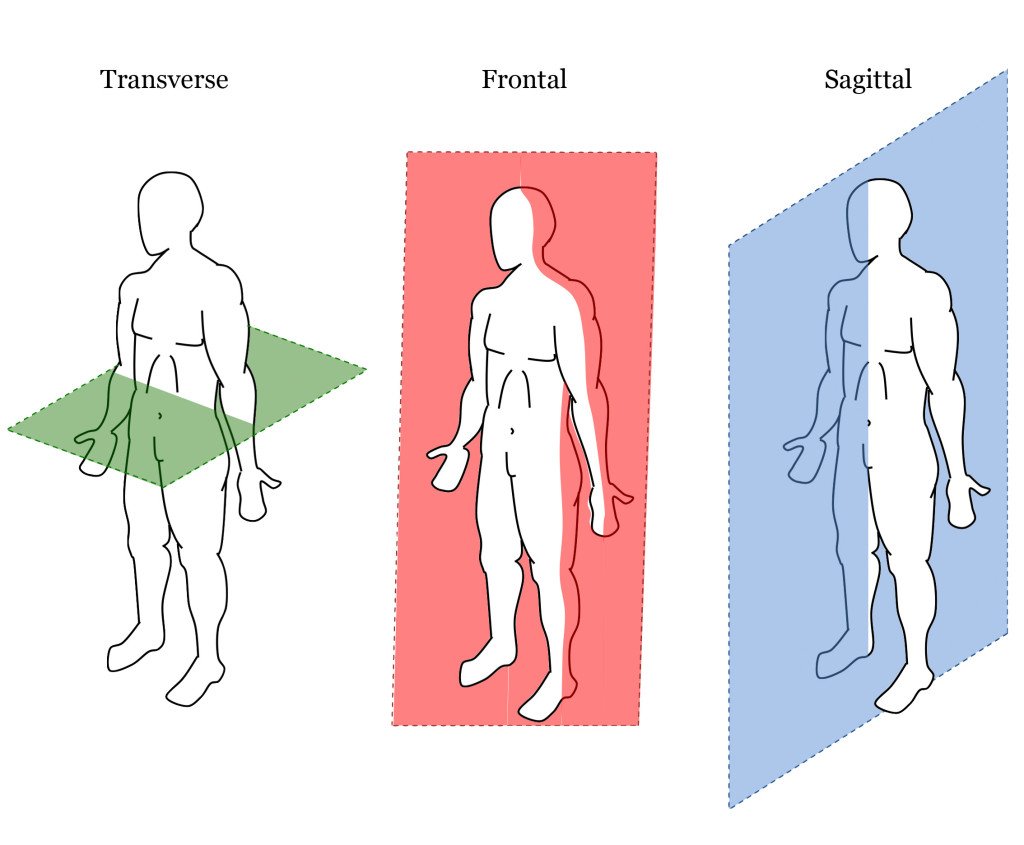
Planes of Motion photo courtesy: goldsgymwebsterny.wordpress.com
I did this post titled Baseball Hitting Mechanics for Youth: Straight Landing Front Leg OR Bent?
Benefit #6 in that post I sub-titled, “How Humans Change Direction & Planes of Motion”.
Under the sub-title, I talk about three main planes of motion that we move in:
- Front to back (Sagittal),
- Side to side (Frontal), and
- Twisting (Transverse)…
Also, I included a YouTube video of NFL wide receivers running ‘Tree Routes’.
A wide receiver running a cut route will use the 1) Front to back plane first, then when he makes his 90-degree cut, will momentarily move onto the 2) Side to side plane before getting back on and accelerating in the front to back plane.
A hitter starts off moving on the 2) Side to side plane, but as they start turning get on the 3) Twisting plane.
In order to understand rotational linear hitting mechanics clearly, we must consider putting aside our egos, and truly look at what’s going on in video analysis.
Again, principles first, application second.
Be honest.
Like few coaches that find me on social media…DO NOT fall into the same ‘willfully ignorant’ trap they do.
If you AIN’T growing, then you’re DYING.
Know this about hitters…
There is almost always some form of linear (forward) movement that precedes the twisting. I call it getting a head start before making an explosive rotational move.
Both Pujols, Chamberlain, and Ichiro do this.
But THESE ARE THE FACTS…
The path of the bowling bowling ball down the lane may be different, but ALL three stay within the ‘bowling bumpers’.
Centripetal v. Centrifugal
Here’s a great video from YouTuber SciShow about the difference between Centripetal & Centrifugal Forces:
Centripetal Forces are ‘center-seeking’ and Centrifugal Forces are ‘center-fleeing’.
Here’s how the rotational linear hitting mechanics purist stack up with these two forces:
- Purely rotational side with Centripetal Forces, and
- Purely linear side with Centrifugal Forces…
But clearly the swing is a combination of both…and then some!
I actually say the swing is:
- Linear at Start – hitter getting a head start before stride landing, or second phase of shifting foot pressure,
- Rotational – hitter transfers forward into angular momentum to get barrel into the impact zone, and then
- Linear AGAIN – after impact the hitter chases the ball with the barrel.
The last part is crucial to consistency, and is a good example of Centrifugal Force.
When talking about rotational linear hitting mechanics, I also give the swinging rock-on-a-string example in the main video above.
You see, first the hitter uses Centripetal Force to turn the barrel into the zone sideways…the turn is meant to be quick and compact from an Angular Momentum standpoint (Keeping a slight bend in the front elbow, NOT from swinging down, being short, etc.), until the barrel gets on the plane of the pitch.
Then the hitter either lets the front arm lengthen or stay shortened depending on timing and pitch location, but make no mistake…
Elite hitters will keep their barrel chasing the ball after impact, until both arms get fully extended…whereby the barrel then circles around the body during follow through.
So is it better to teach rotational liner hitting mechanics?
Yes.
As long as it’s a blend of the two.
Not one or the other.
Let human movement principles be your guide.
The path the bowling ball takes in the lane doesn’t matter, just as long as it stays between the bumpers.
- Fix Your Little Leaguer’s Hitting Slump Fast – Proven Confidence Drills & Mental Reset Tools (Used by Top Youth Baseball Coaches) - July 9, 2025
- Best Hitting Drills for 8-Year-Olds (2025): Fix Swing Flaws Fast with This MLB-Trusted Youth Baseball System—At-Home, Step-by-Step, and Built for Game-Day Confidence - July 5, 2025
- Best Youth Baseball Hitting Program to Boost Rotational Power Fast—Trusted by MLB’s Rajai Davis & Built on the Catapult Loading System - June 22, 2025





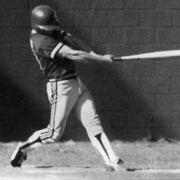


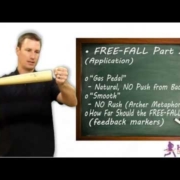
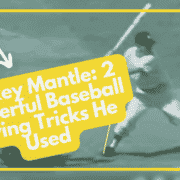



Joey,
Great job once again. If my science teachers used baseball examples, I would have learned such topics better. Don’t forget the back foot skipping into contact as additional linear movement in the swing.
Joe, me too!! And yes, good add with the back foot. We don’t find it ALWAYS skipping, but I like it to depending on the hitter’s timing mechanisms.
Joe… right on… but here we go… It’s both linear and rotational, but what percentage is linear. I would say its way smaller than most think.
Here is Bonds hitting probably the furthest home run he has ever hit:
https://www.youtube.com/watch?v=cQeJ8YQuqh8
While his belt buckle moves slightly forward, his head doesn’t. He might not even be moving his center of mass forward al all…even though his belt buckle moves slightly forward. Since the bat being swung top speed in front of home plate, that mass of the bats centrifugal force must be balanced in the opposite direction which is in back of Bonds towards the catcher… it has to be opposite direction of where the bat is moving.
What he is NOT doing:
1. getting closer to the pitcher
2. waiting till front foot lands or reacting to front foot landing as key to start rotating.
How many hitters keep their head in the same spot the whole swing…. Bonds did.
I’m gonna say that Bonds was the poster child for not moving forward. His forward movement of his spine, like Pujols, was so minimal. They moved their front hips backwards keeping the spine in one location better than almost all MLB hitters.
FYI.. with long drive golfers and longest hitters on tour, they rotate hips 1st move. They don’t get weight on front leg then rotate. The guys that cast the club (Speith) rotate later and decelerate club into impact…
https://www.youtube.com/watch?v=gA2iIxUai8M
Totally Kyle! That’s why I like talking to you…you ask questions. My thoughts on Bonds and Pujols, even though Pujols has moved to a traditional stride over the past couple years, is they have massive bodies. In other words, they may be the exception to the rule. However, what both are doing (like golfers) is using a shifting foot pressure.
Check out this massive study done on golfers, comparing pro movements to amateurs: http://gohpl.com/1U2SdP5
…very insightful as it relates to hitters.
Great thoughts as always Kyle 😀
Joey,
Right, it is difficult to skip the back foot on the low pitch.
Joey,
Love your stuff and agree you with science on the two motions being used in the baseball swing. I do have to disagree being a former PGA golf professional that golfers swing down the target line with the golf club for a long distance. Being a very rotational movement from a bent over position with a bent stick the club only travels down the target for a very short distance. It approaches the ball from the inside contacts the ball and moves back to the inside.
Which make me ask why do coaches tell batters to extend your arms after contact this should be a reaction to what happened before contact not a contrived motion?
I stand corrected on golf Scott 🙂 And I agree, getting both arms extended post impact should be a natural reaction, but a lot of hitters are taught to stay bent with their arms, and/or their swing is more pull than push with the top hand. Both golf and baseball are driven by the push of the top hand, NOT the pull of the bottom hand. It’s more effective to push someone away from our center line, than to pull someone across our center line.
Great article as I noted on YouTube… Without going into a billion comments… I know for some this linear and rotational thing is big… But I wouldn’t really look at it that way just like I wouldn’t tell a kid to hit swinging up, level or down… Having an approach with any of those three would ruin someone if your talking about the SWING… Joey I would think going into the facia lines would be the biggest key… So knowing how to incorporate all, yes ALL, the fascia lines into the swing is most important…I would let the ones concerned with what type of swing is it, debate that on there own… Just like when someone asks me if the swing is up, level or down… I usual say… Its not a teach unless your teaching something different than the SWING…Later…
Note: if you are connected to all your lines what does that mean to you… To me… That’s the preamble….If your not connected to all your lines… Fix that first… You better not power lift or swing a bat… Or do anything…. Get connected!!! Than and only than, use your hands and feet and meet in the middle…. ?
~DM
By the way, the scientists of the day aways knew the world wasn’t flat… Way before the rest of the population accepted it… There was two reasons why many of those scientists didn’t fight that fight… One it was death… And Two was why bother…
I love your fascia, timing and your implementation teachings and drills… By far the best out there!!!!
Well it’s not mid evil Europe but Seriously Why bother? I remember someone telling me, that I’m not looking into the bones and muscle structure anymore…And you were right… Fascia is BIG TIME…
Question? Your going backwards and looking into the physics?
By the way, 5 weeks ago, I was bow legged and lives in extension and flexion… Back pain and all… Even had flat feet…Your so right about fascia!!!! After looking at the line diagrams, reading a few articles and buying a foam roller… Im not bowed leg, nor do I have flat feet and now I’m in neutral ?with no back pain… Thanks for shedding some light on the fascia stuff… Anybody reading this ought to just look into it… It’s something we all should be mindful off… The fact is nobody should do any explosive or training of any kind unless you grasp the bigger picture how fascia operates in the body… I use to work out and just now noticed all of it was counter intuitive or just wrong…This fascia is just amazing…
~DM
By the way, Connected is perhaps not a good term as your always connected… In terms of the fascia doesn’t disappear …What I mean is, in neutral with regards to compression and tension… Therefore we can call on extention… Flexion… Etc… When needed…
Think… Load and unload… Think… Neutral to finish (and hold) to normal (any particular stance) to load and then when it’s time hit the mouse trap ( see ball hit ball)….
But if your body isn’t in neutral your reflex would be off and you leave energy out… For example if you live in lumber flexion….it may be hard for one to ” hitch”…is one angle of many… That flexion is big… Really big… Thus that line is important… And notice your hands/arms and feet/legs have multiples lines…
So when thinking linear and rotation… Do we see the lines in play??? It’s all the lines Joey and it’s set up to be on pilot meaning we have to know the best sequence to channel and than learn how to set or hold it… Do we see the two planes and the moment of weakness and why we are weak for just a moment… The transition…
Alright I’m out… Hope all is well and you see what I’m trying to communicate…
~DM
Joey the hands do both pull and push…. And by that I don’t mean bottom pulls and top pushes… I mean the bottom pulls and pushes… The top pulls and pushes… I would also think about riding a bike…. Do you push with the right foot and ride the right until it’s time to push again… Or does your quad pull when peddling on top and than push with the gludes perhaps…. The reason I’m mentioning this is… If you do both with the right foot… Push and pull… What fascia lines are you using and what arm lines are you connected too…so the forces (pushes and pulls are done by both hands), one of the forces is on the “stride” or getting lateral tilt….and the other force is for both pushes… Remember… If the body is fully connected… Saying something like the body does this or that makes no sense… If your fully connected the body is everything so what does the body mean if your fully connected…. The pinches are adjustments to accelerate the turn and to locate the turn… The pinches are at specific places that make sense… There are 4 arm lines… One good for pushing, one is good for pulling and the other two are good for opening and closing or making sure the hinge works without getting out of alignment… That sounds good, the other two are for alignment… Set it and forget it…
~DM
Sorry… I meant… Quads/hammies are the push and pulls… So obviously the arms have the same…. And the fingers/palms/wrist and toes/heel/ankle have the same thing going on….?
I guess I’m losing you or you don’t agree… No worries!!!
I have a bunch more observations but I guess I’ll keep them to myself… By the way I did buy Thomas Myers book… It’s golden… Thanks so much … as now I see so many things in daily life differently…
Just one little thing… Once you shed some light on the fascia… It made me understand my previous thoughts and gave me what I needed to put things together… The first thing I thought of was… I need to make sure my lines are strong, balanced and not interfering ( tangled)… That was a bigger eye opener as I could actually see where things were interfering and what goes together…. Etc… What’s crazy is you actually see and feel it…
You see what where I’m going… And I had terrible posture so I saw and felt it to the point it’s undeniable…And the best thing was I didn’t even know it until I really looked into it…I actually thought I had pretty good posture and it wasn’t that big of a deal… That’s it!!!! That affected my reflexes and so much more… My breathing…. Etc…. Not to go into it but it’s always right in front of you and once you see it… It’s like… Seriously.. That’s it… By the way I wouldn’t only focused on the X pattern… I’ll look at the X with bottom 3 of both hands and top 3… What “top 3” … Kind of… With the same side foot…. Also when I balanced myself which sounds weird but I hope you see what I’m saying… I used my hands and feet to push through… Or else it would have taken forever to Let my “body” do it…Also I noticed my neck was really involved more than I would have guess… Meaning… It could really be hard to have two people have the same reflexes… Hard to say how substantial it would be but I guess if you get my premise… You are in neutral… Perfect posture… Than you use your hands and feet to set… Than you push through with your core…. And the premise is you use your core… But that should be realized as we should be using our core to start… For most off our movements and yes even daily movements… Getting up… Typing… Opening doors…. Etc…One thing I don’t understand is the stride.. Some say… Don’t step like your walking… Well…question??? How do you walk… Because I walk with my core….
By the way when you walk with your core your tspine rotates… If you resist that rotation your pelvis rotates and if you resist that your knee ( kind off) rotates along with the ankles… There power in letting and resisting… Seriously… I’m out… Later…Any thoughts Joey??? Am I way off base… I feel like I get it… Let me know what you think when you have time…
Hope all is well…
~DM
So 1)… Get good… With my lines… Than 2) learn how I can make dominoes with the lines… NOT the bones and/ muscles… So I first looked into all the last, first and intersecting muscles of each line… That made thing clearer but again I’m not studying these things… And what do I know…
Later…
~DM
Joey,
My son drops his hands early and swings less rotational. He gets bat in a longer horizontal plane. He hit .436 in JV Baseball and .315 in Babe Ruth. I don’t like the swing and he wants to get better. Would a sling device making him swing more rotational be of greater assistance in your mind.
Tom, for hands drop, check out this post: https://gohpl.com/2LMZBNC